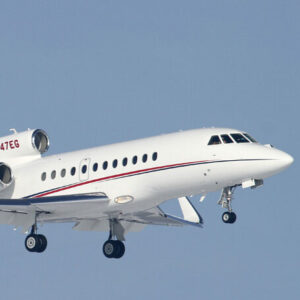Can you fly in your private jet and be green? As the climate crisis intensifies, the aviation industry and its lobbyists hope to make it seem that way.
As celebrities and billionaires rack up bad press for the carbon footprints of their private jets, the industry’s lobby is hyping so-called “sustainable aviation fuels,” or SAFs, as their answer to their oversized role in the climate crisis. And they want taxpayers to chip in.
Thanks to the aviation and ethanol lobby, some money is already flowing. Congress recently passed an FAA Reauthorization bill that includes a growing investment in alternative jet fuels. The Treasury Department recently issued guidelines for a Sustainable Aviation Fuel Credit, a provision included in the 2022 Inflation Reduction Act.
Before taxpayers shell out any more, we should act like smart grocery shoppers who come across “all-natural” labels on food products: We need to look closely at the ingredients.
In a new report we co-authored, “Greenwashing the Skies,” we conclude there is no realistic or scalable alternative to kerosene-based fuels to meet aviation demands, let alone the industry’s future growth projections.
Of course, the decarbonization of aviation is technologically possible. For example, we know that electrification of small short-range aircraft is a real option that can be scaled up in the coming decades. Potential synthetic and hydrogen-based alternative fuels also exist.
But how much potential is there really? And what are the tradeoffs? When we look closer, there’s reason to be concerned.
To expand SAFs, producers must use biogenic feedstocks like wheat straw and corn-based ethanol. However, shifting agricultural land to fuel production could threaten our global food supply and destroy forests and wetlands, which absorb carbon.
According to the World Resources Institute, producing 35 billion gallons of SAFs, the administration’s goal, would require 114 million acres of corn — 20 percent more than the total land area of corn crops today. A 2023 report by Britain’s Royal Society found replacing fossil-based jet fuels with bio-based fuels would require the United Kingdom to give up 50 percent of its agricultural land to sustain its current levels of air travel.
Even if we overcome that obstacle, mass production of SAFs is still a couple of decades away — time we don’t have to meet our climate goals. In 2022, the U.S. produced just 15.8 million gallons of SAFs.
To meet the administration’s 2030 production target of 3 billion gallons of SAF annually, production would have to expand by 18,887 percent over the next six years! To meet the 2050 target of 35 billion gallons, the increase will have to be a whopping 221,419 percent over 2022 levels.
Add to this the aviation industry’s abysmal record of meeting its goals. The International Air Transport Association asserted in 2007 that SAFs would account for 10 percent of all jet fuel within a decade. Even after the association repeatedly lowered that benchmark, SAFs account for just 0.2 percent of the total jet fuel supply.
Burning SAFs emits carbon dioxide — sometimes more than kerosene-based jet fuel.
The industry’s response to its failure is predictable: “We need to invest more money in new SAF infrastructure and production.” But when they say “we,” they’re talking about your money.
Don’t underestimate the power and clout of the aviation industry to win subsidies, especially the private jet lobby that represents the interests of the wealthiest people on the planet. They’re eager to extract billions from taxpayers around the world.
There are finite resources for the transition to a post-fossil fuel economy. Allocating resources for private jets — many of which are used for recreational purposes — is the least defensible use of societal resources on a warming planet. Government subsidies should flow toward electrifying our bus fleet and building green transit and high-speed rail to move millions of people, not private jets, for a select group of billionaires and multi-millionaires.
At this stage, “sustainable aviation fuel” is essentially a marketing term promoted by the aviation industry to deflect concerns about the sector’s vast greenhouse gas emissions. We shouldn’t buy their greenwashing campaign.


